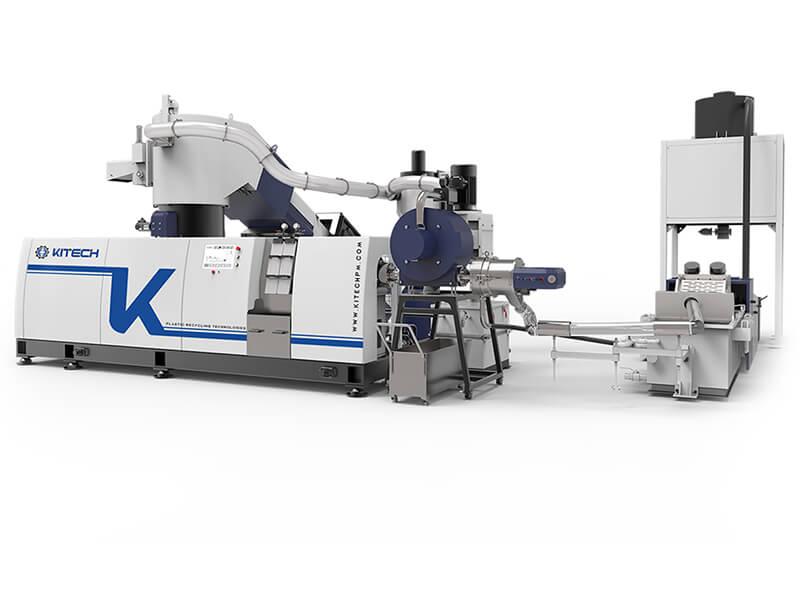JIANGSU KITECH MACHINERY CO.,LTD
In most plastic granulators, changes in screw speed are achieved by adjusting the motor speed. The motor usually rotates at about 175r/min, but this is too fast for a granulator screw. If it were turned so fast, too much frictional heat would be generated, and the residence time of the plastic would be too short to produce a uniform, well-stirred melt. Typical deceleration ratio is (10:1)-(20:1). Both gears and pulleys can be used in the first stage, but gears are used in the second stage, and the screw is positioned at the center of the last large gear.
In some slow-running machines (such as twin-screws for upvc), there may be 3 reduction stages and the maximum speed may be as low as 30r/min or lower (ratio up to 60:1). At the other extreme, some very long twin screws used for mixing can run at 600r/min or faster, and therefore require a very low deceleration rate and require a lot of deep cooling.
Sometimes the deceleration rate is different to match the task, there is too much energy that cannot be used, and it is possible to add a pulley block between the motor and the first deceleration stage that changes the maximum speed. This will either increase the screw speed beyond the previous limit or reduce the maximum speed to allow the system to operate at maximum speed. This will increase available energy, reduce current flow and avoid motor heating problems. In both cases, depending on the material and its cooling needs, the output may be increased.
